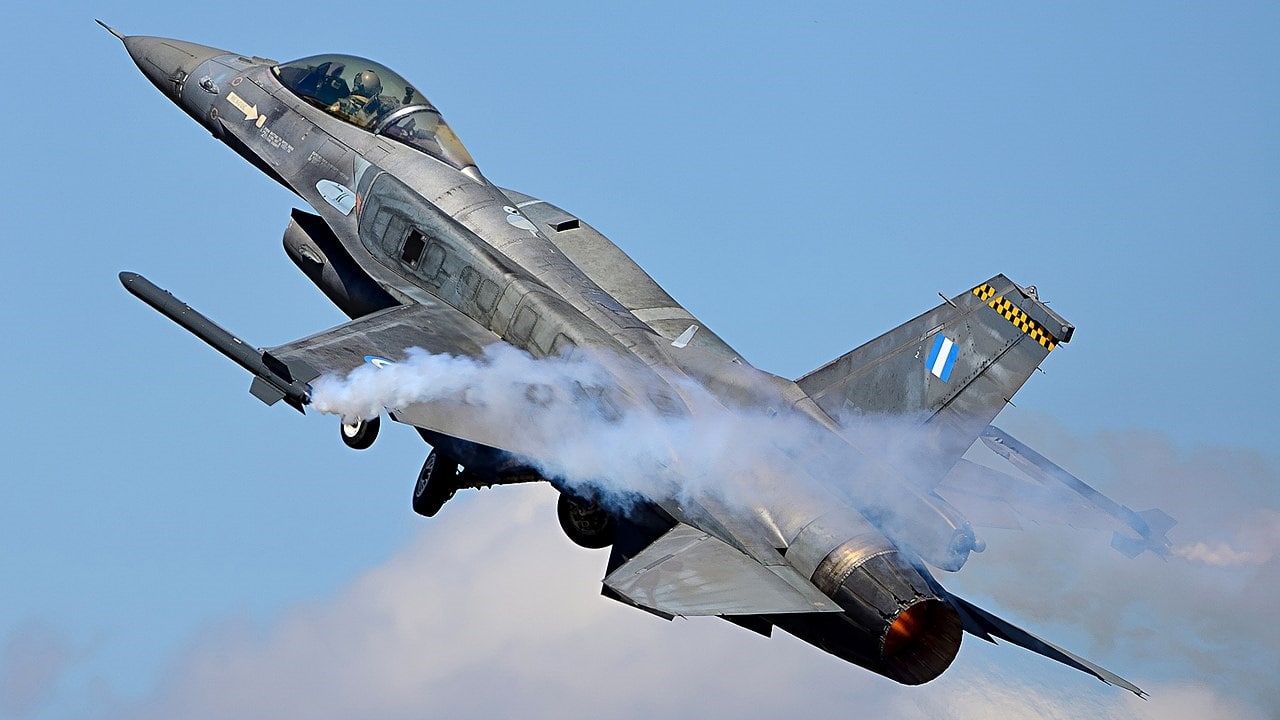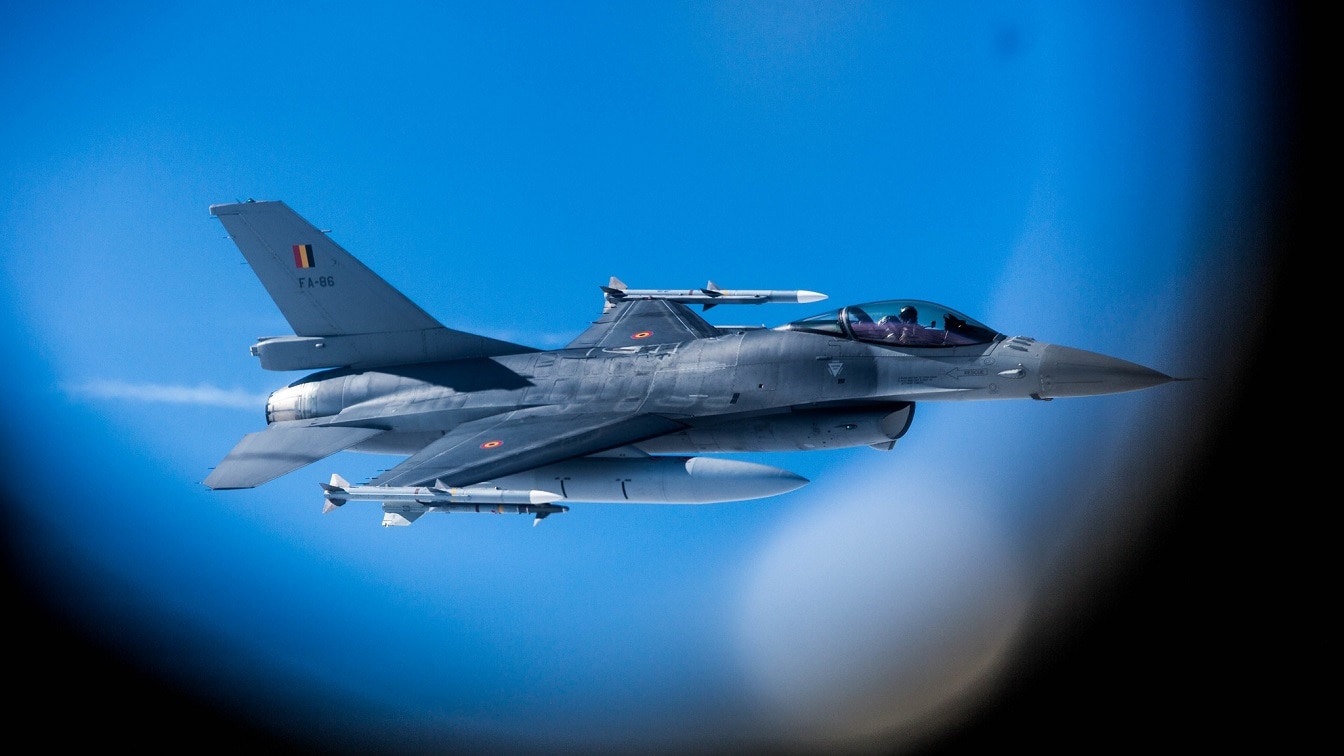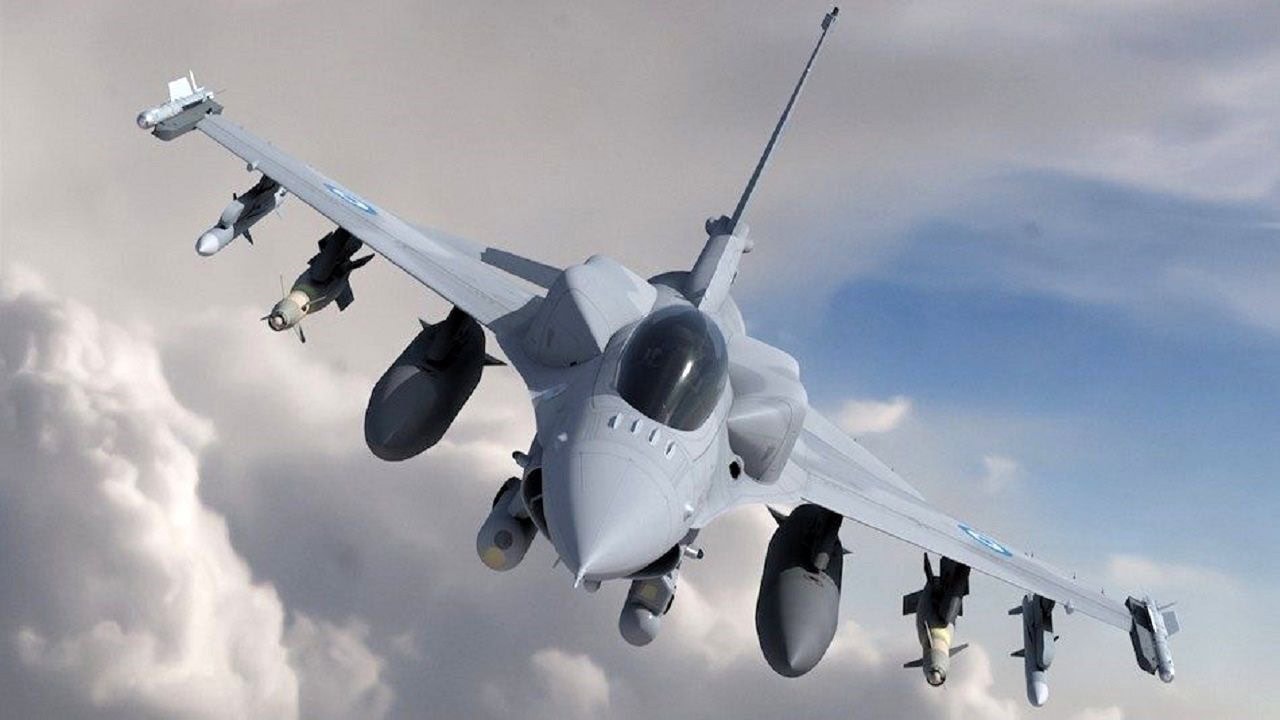Key Point: With a backlog of over 100 aircraft and strong global interest, the F-16V proves that even after 50 years, the Viper is still a force to be reckoned with.
Meet the F-16V Block 70/72 Fighter
The F-16V Block 70/72 “Viper” is described as every bit a revolution in the world of fighter aircraft as the flight of the original YF-16 prototype more than half a century ago was. The aircraft’s design addresses many aspects of all the other F-16 variants (excluding the United Arab Emirates F-16E/F Block 60) that make these previous models decidedly not 5th-generation in capability.
Updating these major subsystems is required to make the aircraft more compatible and interoperable with fifth-generation fighters like the F-22 and F-35. These upgrades also improve Block 70/72’s performance, which is a significant plus for export customers, who find that the F-16 is the only high-performance aircraft in their inventory.
Some significant system improvements to the F-16 with the Block 70/72 models exist. The most important being the Northrop-Grumman AN/APG-83 Active Electronically Scanning Array (AESA) radar set. All the pervious F-16A/B and C/D-series models had the older-generation Mechanically-Steered Array (MSA) installed onboard.
The addition of this radar gives the jet far more radar modes, increases targeting capacities, and provides the pilot with a far greater level of situational awareness. One of the most liberating aspects of this kind of sensor array—from the perspective of one pilot that 19FortyFive spoke to—is “this radar permits scanning, track-while-scan and targeting in both air-to-air and air-to-surface modes simultaneously.”
Another pilot stated that “with the fidelity and number of data/target inputs that this radar provides dependence on AEW&C platforms like the Boeing E-3 AWACS, is significantly reduced.”
The APG-83 design team at Northrop-Grumman had the advantage of having designed and built three other AESA models: the APG-77 for the F-22A, the APG-80 of the F-16E/F Block 60 and the F-35’s APG-81. This gave the design team, said one of the company specialists, “the background in the design and performance of the different generations of transmit/receive modules (TRM), so they were well-versed in AESA design methods by the time it came to develop this radar.”
F-16V Fighter: A Long History
The concept for the F-16V stretches back more than a decade. In February 2012, the concept for the aircraft was first displayed at the Singapore Air Show. The proposed Viper configuration was offered in two options. One option is to acquire a new production aircraft, but the second is a components upgrade that could be retrofitted to existing F-16 versions.
Other features are a sizeable high-resolution center pedestal display (CDP), a helmet-mounted cueing system (GMCS), and a higher-volume, high-speed data bus. The CPD significantly improves the crew’s situational awareness by providing real-time processing and imaging of flight data. The data can be presented in high fidelity with an upgraded, programmable display generator, a Link-16 theatre data link, IFF, and an improved radio communications suite.
All of these onboard systems are, in turn, controlled by a single, high-performance modular mission computer (MMC). This new-generation “brain” for the aircraft replaces what was formerly a set of three computers, making the new onboard computerized control center for the aircraft lighter in weight, requiring less space, and being more powerful.
Production and Customers
Customers for this aircraft and the reason for developing this advanced variant was to give an AESA-equipped and generally more sophisticated F-16 to those nations that would never be cleared for an F-35 purchase or could not afford to acquire or support that 5th-generation aircraft.
Among the customers acquiring new F-16Vs and/or receiving kits to upgrade their older-model aircraft to the new configuration are Bahrain, Morocco, the Philippines, the Republic of China, Greece, Turkey and Slovakia.
However, the quandary that Lockheed Martin found itself in was that the F-16’s decades-old production site in Fort Worth was full-up with activity related to F-35 production. The decision was made to move the production site to a new Greenville, South Carolina, plant.
However, it was a slow process to move to the other end of the continental US and then spool up a new full-scale production line.
In 2017, Greenville began prepping the plant for F-16 manufacturing. The production jigs and tooling were transported from Fort Worth to Greenville in 2018. Finally, in 2019, the plant started its production work on the first aircraft to be rolled out of the plant.

Greek Air Force or Hellenic Air Force F-16 Fighter.
That first aircraft took three and half years to build, making its first flight in January 2023 before being delivered to Bahrain.
LM officials state they have an over 100-aircraft backlog and they see at least another 300 potential sales in the future. This, however, has the potential to change with the impact that the war in Ukraine is having on more than one region in the world.
Poland will now upgrade its F-16C/Ds to the Block 70/72 standard. Ukraine, now becoming an operator of used F-16 models, will more likely than not be receiving the Block 70/72 models in the future.
Despite having first flown 50 years ago, the F-16 design appears to still have some life left in it.

NATO F-16. Image Credit: NATO Flickr.
About the Author: Reuben F. Johnson
Reuben F. Johnson is a survivor of the February 2022 Russian invasion of Ukraine and is now an Expert on Foreign Military Affairs with the Fundacja im. Kazimierza Pułaskiego in Warsaw. He has been a consultant to the Pentagon, several NATO governments and the Australian government in the fields of defense technology and weapon systems design. Over the past 30 years he has resided in and reported from Russia, Ukraine, Poland, Brazil, the People’s Republic of China and Australia.

